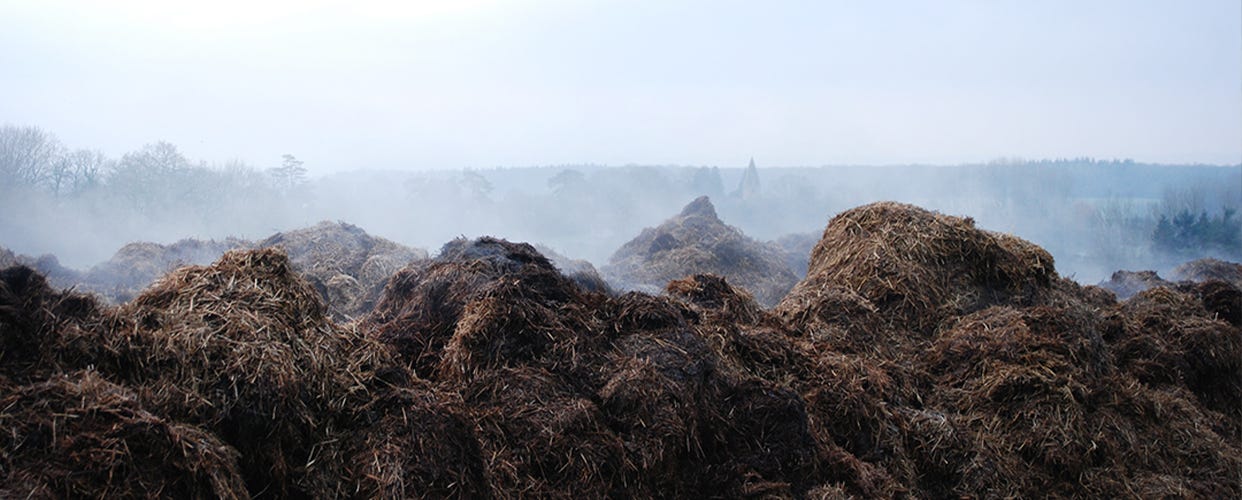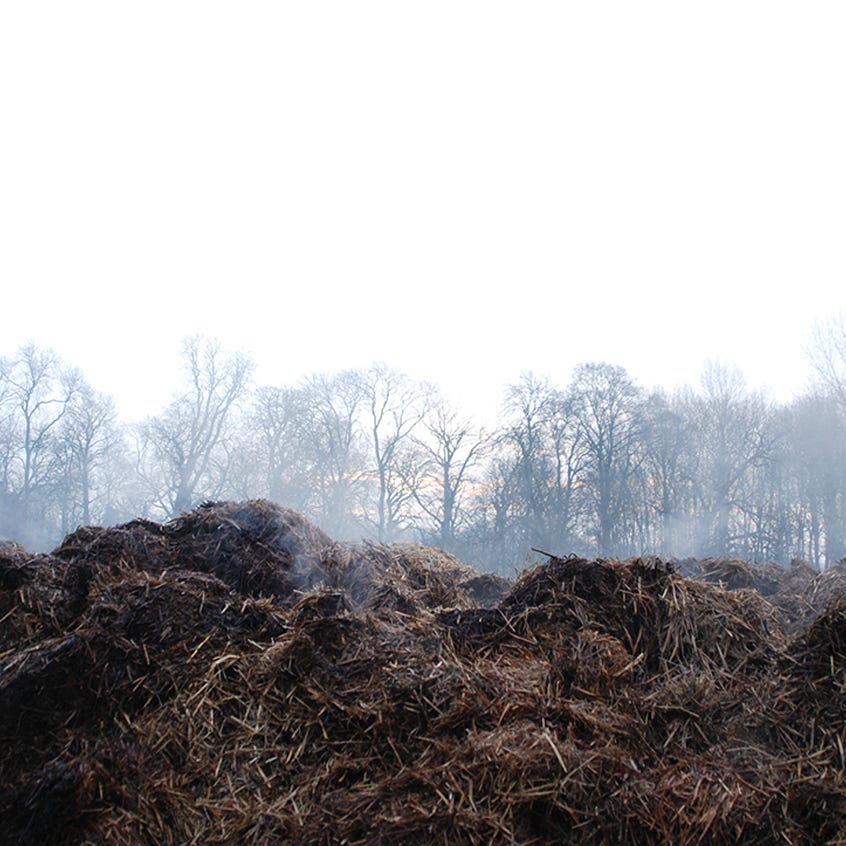
Muck heaps and soil health
In the quiet of a crisp winter’s morning a gentle plume rises from a field edge. The remnants of a bonfire? No, it is steam rising off a mighty muck heap. A community of billions of fungi, bacteria and invertebrates are industriously composting away, letting off steam in the process. The larger beasties wriggle back and forth, aerating and mixing the outer layers, exposing a few weed seeds and husks on the surface. The combination of warmth, bugs and worms, with a side order of seeds and grains, make this a bird feeder of gargantuan proportions.
Cow muck is a familiar scent around stock farms on windless winter days, particularly when it’s being shunted around. The beeping of a reversing Loadall is reminiscent of yard scraping, mucking out and turning. In an ideal world, muck is manoeuvred into a covered store before being carted to field when a suitable weather window appears. In well-endowed farmyards a large, concrete pad and silos will allow regular turning without damaging soil structure. Otherwise, it is in-field composting, heaped on a firm piece of ground far from ditches, drains and watercourses. It is turned every six weeks to aerate.
Patiently waiting a year to compost, the spreader kicks into gear when the ground firms up or a hard, frosty day enables muck mobilisation. The valuable crops most in need of nitrogen will be prioritised, such as winter cereals. Giving a dose of nitrogen from well-rotted manure will help the crop get away in spring. Otherwise it could be stubbles ready for the spring drillings or pastures in line for a hay or silage cut at the start of summer. Once the first cut of silage is taken, the muck spreader follows closely behind to give a boost to regrowth before another cut or grazing.


Nutrient cycling with maure is one of the great values of mixed farming. Muck spreading is the means of shifting nitrogen from feed, via livestock to the next crops. It is often forgotten that an animal by itself doesn't generate fertility, it mearly recycles it. A cow grazing a grass pasture is quietly stripping fertility and over time the field will be less productive; unless, that is, feed, muck or fertilisernis brought in to replenish the nitrogen removed by the grazing cow.
However, the miraculous biology of nitrogen-fixation in leguminous plants (such as clover) and other soil microbiology replenish soil fertility. Therefore, an optimal system will fix fertility in leguminous leys, harvest the “fat from the land” (as silage or hay) during peak growing season, conserve to feed in winter and recycle via manure for future plant growth. A few years of building and redistributing nitrogen in the crop rotation allows for increased productivity without the cost of artificial fertiliser or imported feed.
Areas where muck distribution is more of a challenge, such as the steep slopes of downland or saturated flood meadows, become “unimproved” pastures. Without competition from dominant grasses, the sward diversity flourishes with flowering plants and associated assemblages. After a period of considerate fertility building, the farm will present areas less suited to intensive efforts and biodiversity will benefit. While these areas might still be grazed, hay taken or weeds managed, more intensive treatments of subsoiling, muck spreading or reseeding are directed towards the farm’s soils that make up the bread basket.
Soil nutrient recycling of mixed farming systems is, without a doubt, part of the solution to the problem of soil depletion and there is a reassuring appetite to value the magnificence of manure. May steaming beacons of muck symbolise enlightened perspectives on soil husbandry.
This article was originally written by Daylesford for THE FIELD
